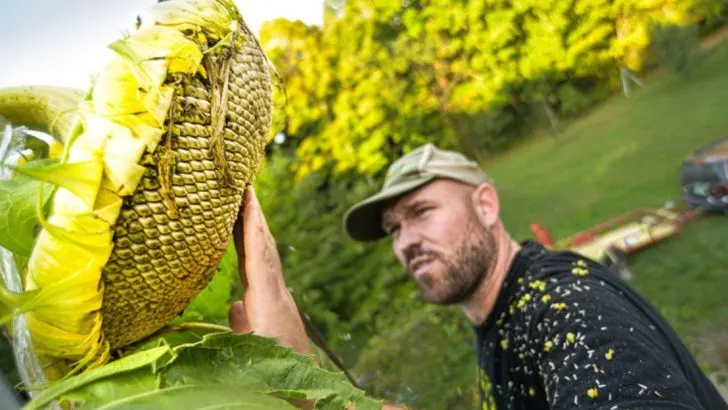Sunflowers may seem like the friendly giants of the garden — always smiling toward the sun, brightening up fields and backyards alike. But behind their cheerful faces lies a world of strange science, unexpected behaviors, and bizarre history.
These plants can move, track the sun, and even clean up radioactive soil. Their spirals follow mathematical perfection, and their oil once powered ancient engines. Some varieties grow taller than houses, while others fit in a teacup. And one species? It’s entirely black.
Whether you’ve grown them, photographed them, or simply admired them by the roadside, sunflowers have been hiding fascinating secrets in plain sight.
Here are 17 of the weirdest, wildest facts that will completely change the way you look at this summertime favorite.
Sunflowers Track the Sun
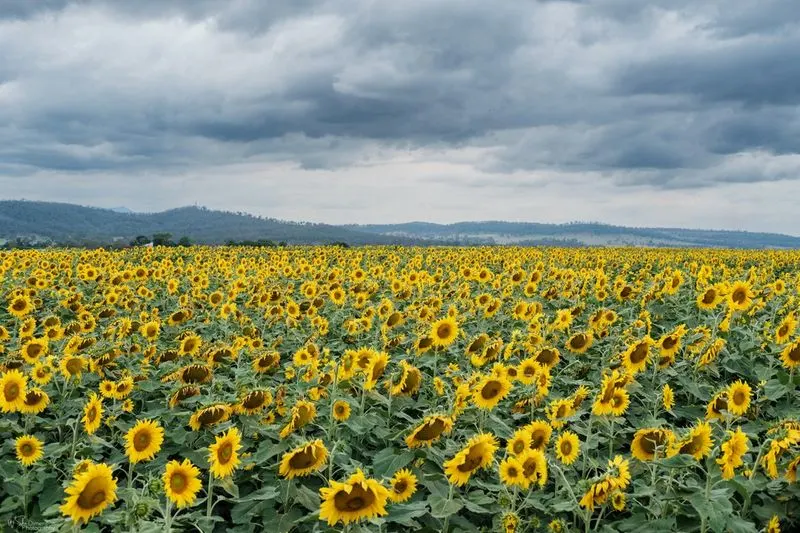
Ever noticed how sunflowers seem to follow the sun? This phenomenon, called heliotropism, involves the young flower buds and leaves tracking the sun’s path from east to west. Mature sunflowers, however, typically face eastward. It’s like they have their own internal compass directing their gaze. This sun-tracking behavior helps optimize photosynthesis, allowing them to grow strong and tall. As the sun dips below the horizon, these vivid flowers slowly turn back to greet the dawn. Imagine waking up each day with such enthusiasm for the sun’s rays!
Sunflowers Clean the Soil
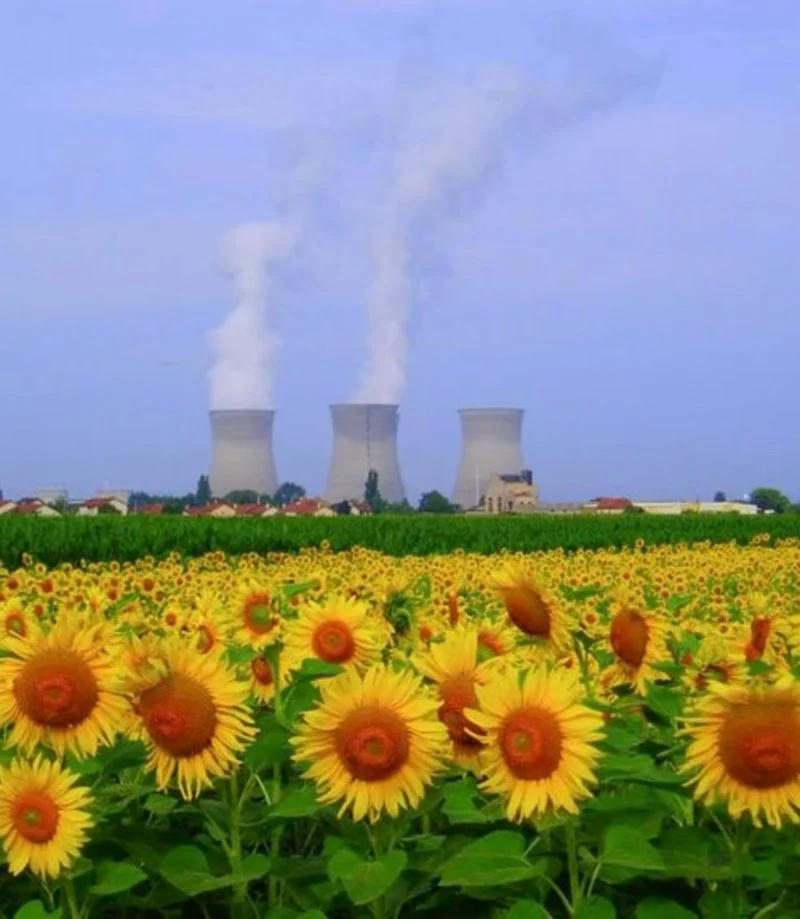
Sunflowers are not just pretty faces; they’re environmental heroes. Known as phytoremediators, they have the incredible ability to absorb toxic elements from the soil, such as lead, arsenic, and uranium. During the Chernobyl disaster cleanup, sunflowers were planted to decontaminate the soil. Their roots draw in these harmful substances, storing them in leaves and stems. This natural process is a green solution for soil pollution, making these flowers a symbol of hope and renewal. Next time you see a sunflower, remember its hidden power to heal the earth.
Sunflower Oil in Space
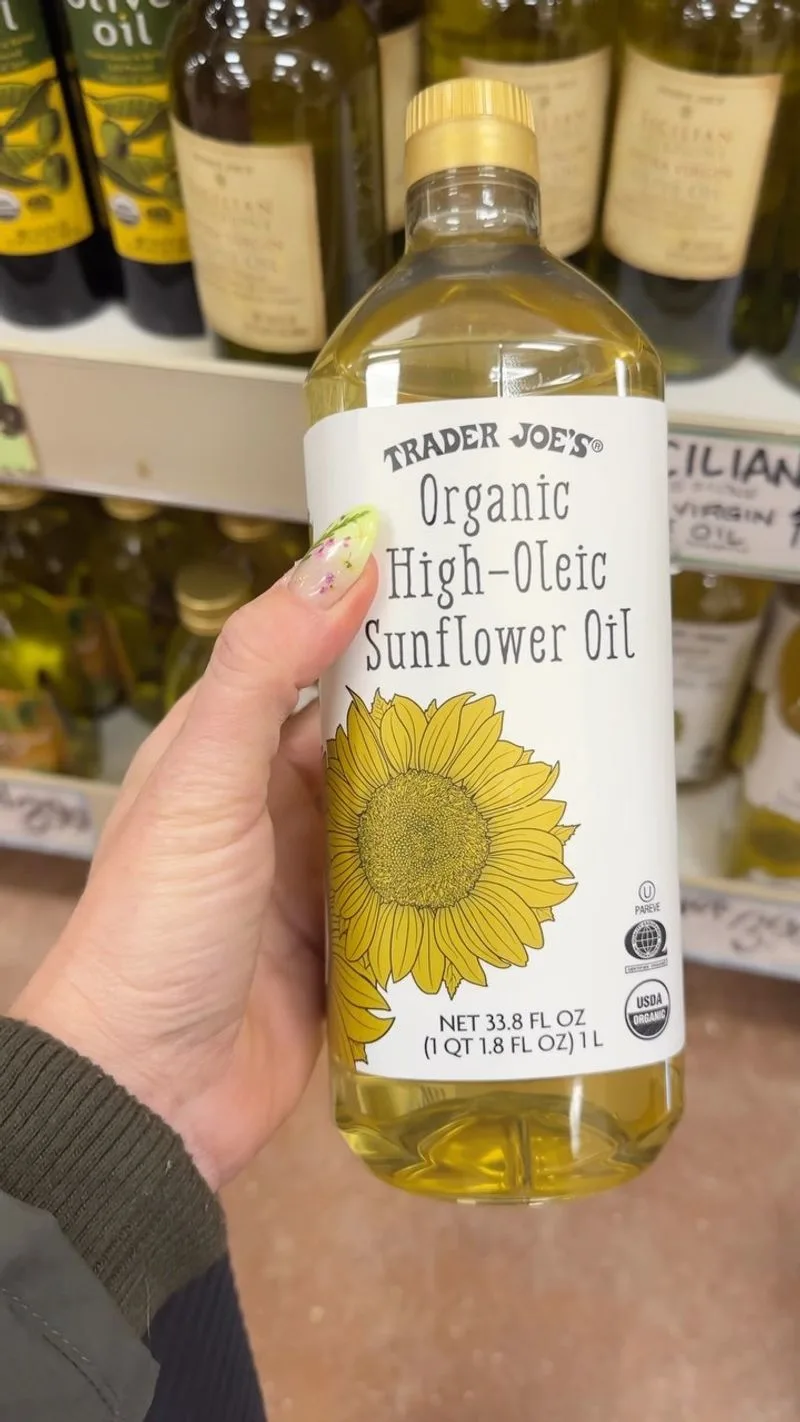
Did you know that sunflower oil has made its way into space? Used by astronauts, this versatile oil is favored for its high smoke point and neutral flavor. Cooking in space requires ingredients that are both functional and safe, and sunflower oil checks those boxes. Imagine whipping up a space meal while orbiting Earth, with sunflower oil making it all possible. It’s a small reminder of home for those floating among the stars. The next time you cook with sunflower oil, think of its interstellar journey.
Sunflowers Come in Many Colors
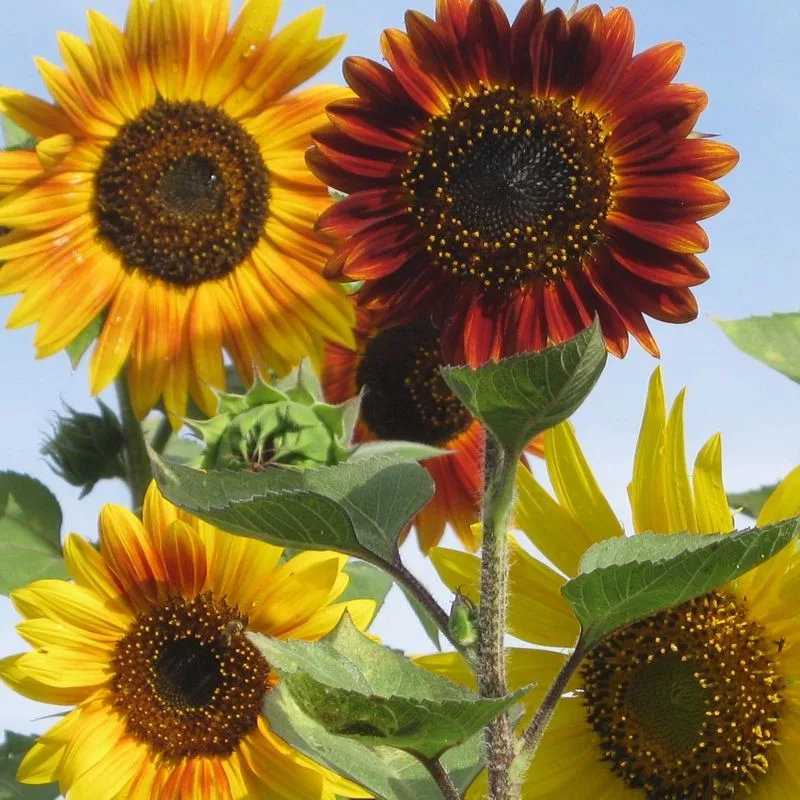
While the classic sunflower is bright yellow, these blooms come in a variety of colors. From rich reds to vibrant oranges and even deep purples, sunflowers display a surprising palette. Each hue brings unique beauty to gardens and bouquets, offering a twist on the traditional sunflower image. These colorful varieties are just as easy to grow and maintain, making them a fun addition for any garden enthusiast. Imagine the delight of seeing a rainbow of sunflowers swaying in the summer breeze!
Sunflowers in Art
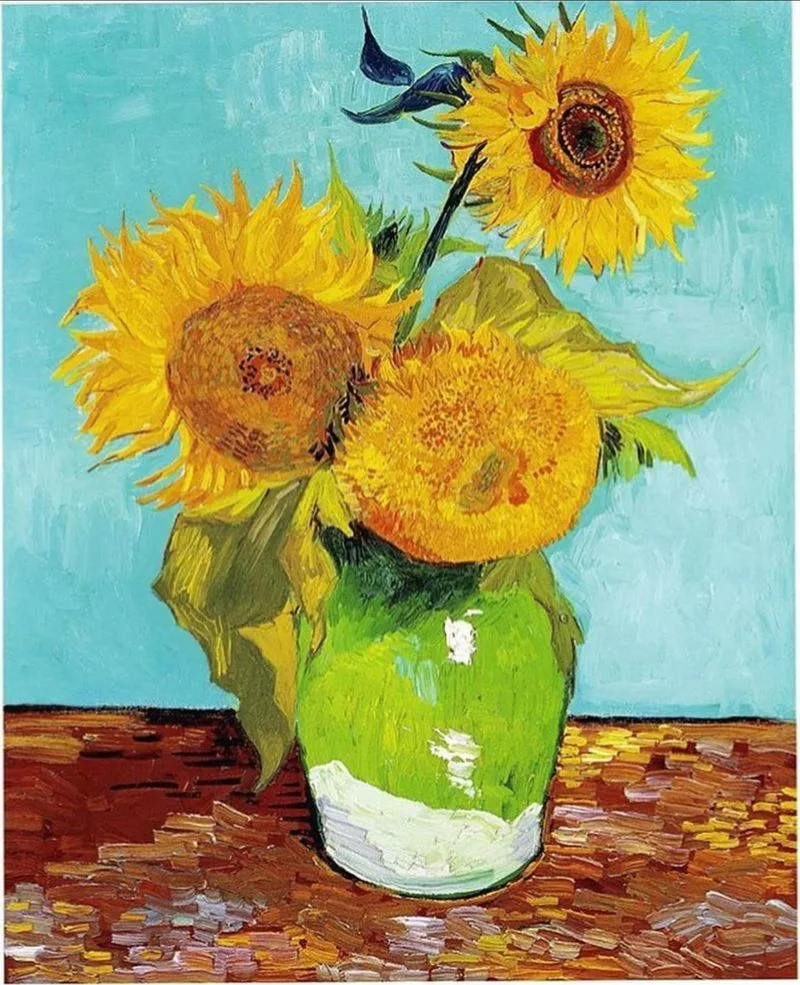
Vincent van Gogh’s famous sunflower series highlights these blooms’ artistic allure. Painted in the late 1800s, these works reflect van Gogh’s fascination with the flower’s form and color. Sunflowers symbolize happiness and warmth, traits van Gogh admired and captured with his brush. These paintings continue to inspire artists and art lovers alike, reminding us of nature’s beauty. It’s amazing how a simple sunflower can become a timeless muse for creativity! Imagine standing in front of one of these masterpieces, feeling van Gogh’s passion.
Giant Sunflowers Break Records

Some sunflowers reach astonishing heights, with the tallest recorded over 30 feet! These giants dwarf most garden plants, creating a striking visual in any landscape. Growing such a behemoth requires optimal conditions and dedication, with gardeners often competing for the tallest bloom. Imagine a sunflower towering above you, its head nodding gently in the breeze. It’s a testament to nature’s ability to surprise and delight with its seemingly endless possibilities. Who knows? The next record-breaking sunflower might just be sprouting in your backyard!
Sunflower Seeds as Snacks
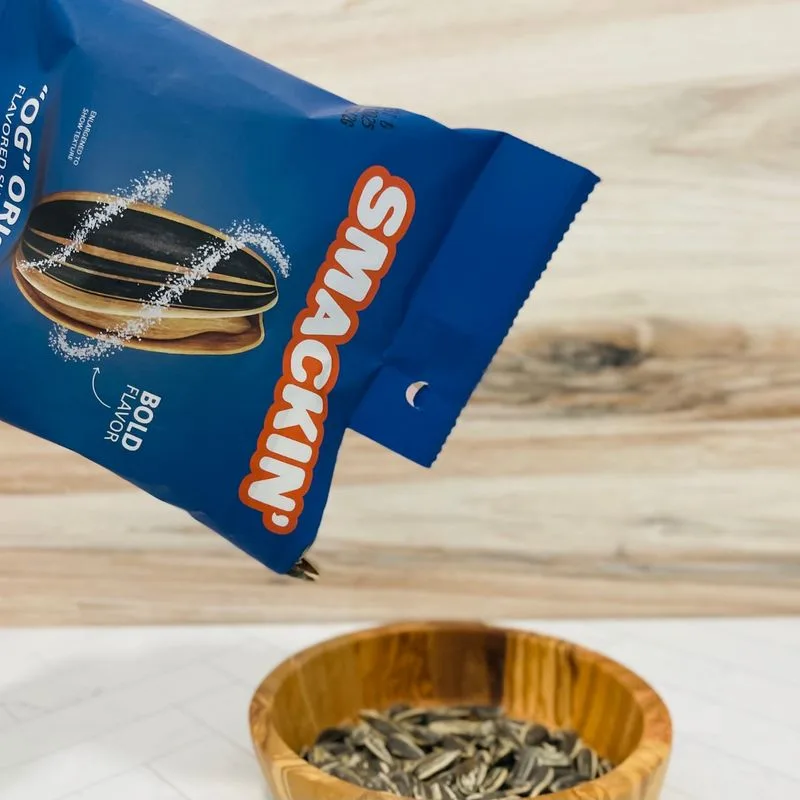
A favorite snack for many, sunflower seeds offer both flavor and nutrition. Rich in vitamins E and B1, they also provide a good source of protein and healthy fats. This tasty treat has been enjoyed for centuries, with evidence of sunflower seed consumption dating back to Native American cultures. Modern snackers appreciate them for their versatility, from roasted and salted to added in baked goods. Picture cracking open a sunflower seed, enjoying its nutty essence, knowing you’re part of a long tradition.
Sunflowers Symbolize Loyalty and Adoration
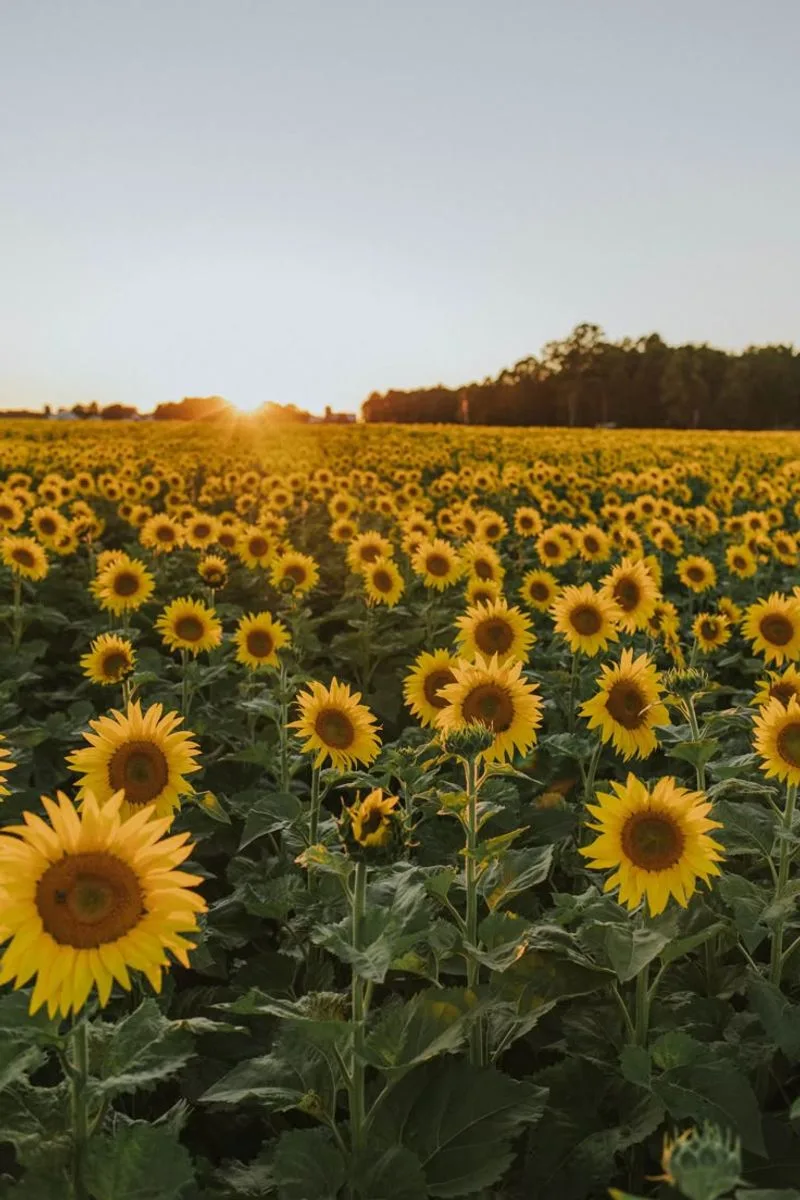
Sunflowers have long been associated with loyalty, adoration, and longevity. Their bright, open faces turn toward the sun, symbolizing warmth and happiness. Giving sunflowers is often seen as a gesture of admiration and love, making them popular in romantic and friendship bouquets. They represent a steadfast connection and a reminder of someone’s sunny presence in your life. Consider gifting sunflowers to someone special, sharing their vibrant glow and heartfelt meaning. Their symbolism adds depth to any occasion, making them a meaningful choice.
Sunflowers in Literature

These bright blooms have captured the imaginations of writers and poets throughout history. Sunflowers often appear in literature as symbols of strength, positivity, and renewal. They inspire metaphors for resilience, much like how they stand tall and turn toward the sun. Imagine a character in a novel finding solace in a sunflower field, its beauty offering hope and inspiration. This imagery enriches storytelling, connecting readers with the timeless allure of nature. The next time you read, look for sunflowers woven into the narrative.
Sunflower Festivals Around the World
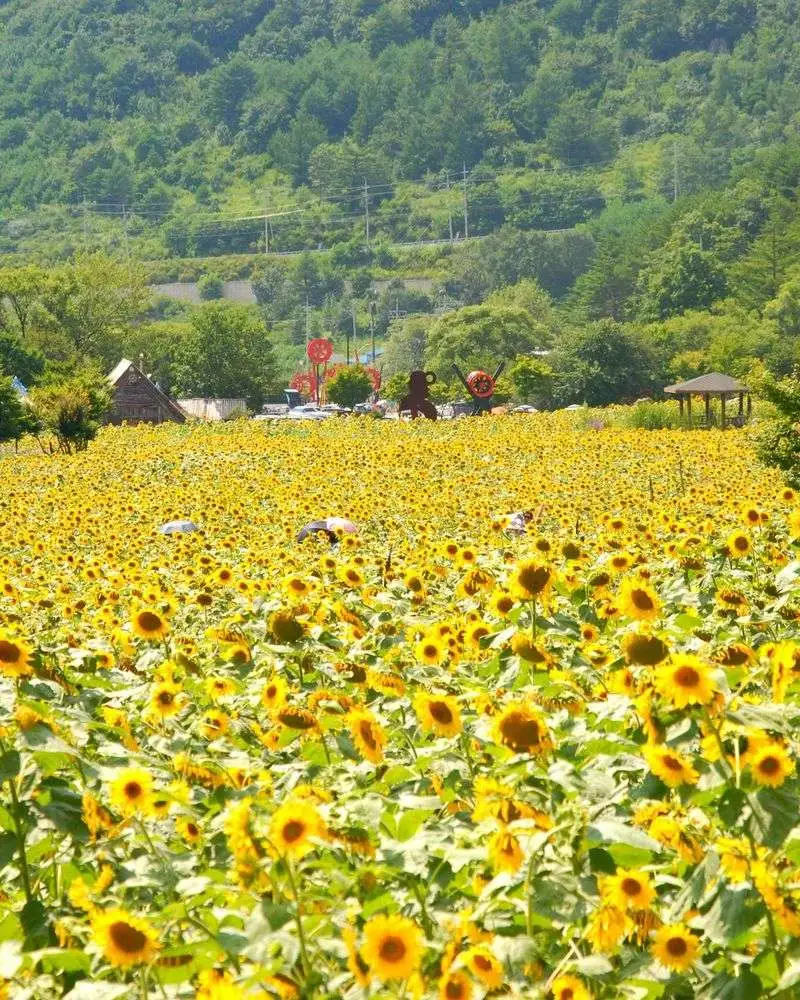
Around the globe, sunflower festivals celebrate the beauty of these vibrant flowers. From the USA to Japan, these events draw crowds to fields bursting with color. Visitors enjoy activities like flower-picking, photo opportunities, and sunflower-themed crafts. Imagine wandering through endless rows of sunflowers, their golden faces smiling in the sun. These festivals bring communities together, fostering appreciation for nature’s wonders. Whether you’re a flower lover or just looking for a fun outing, sunflower festivals offer something for everyone.
Sunflower Roots and Growth
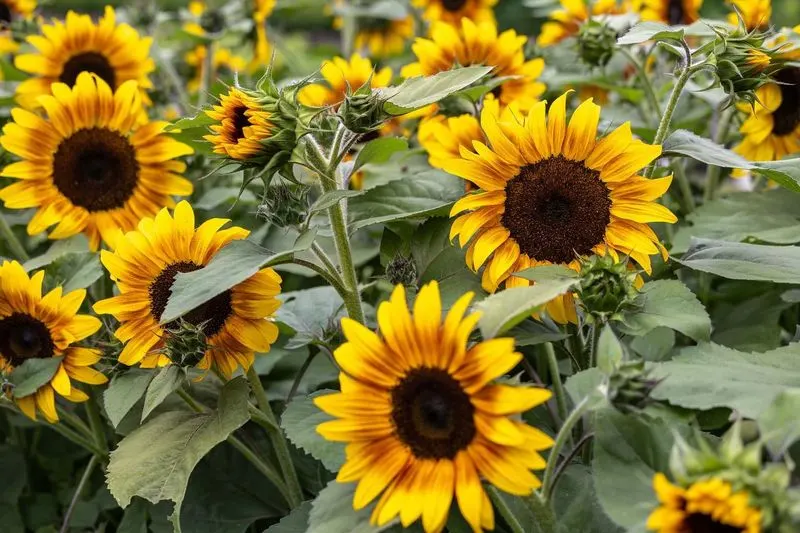
The roots of a sunflower plant are as impressive as its towering stalk. These intricate networks anchor the plant and absorb essential nutrients and water. Sunflowers grow rapidly, often achieving their full height in just a few months. Imagine the underground activity as roots spread and strengthen, supporting the plant’s dramatic growth. This vigorous development process showcases nature’s engineering marvels, reminding us of the power beneath the surface. Next time you admire a sunflower, consider the unseen world beneath it.
Sunflowers and Pollinators
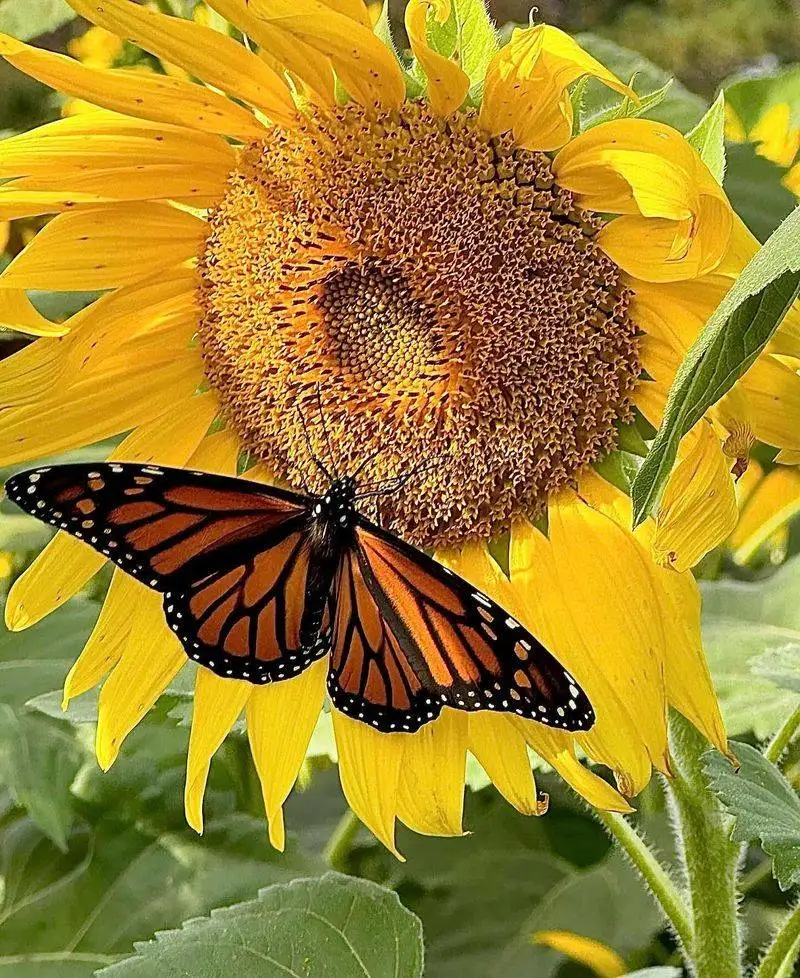
Sunflowers are a favorite stop for pollinators like bees and butterflies. Their large, open blooms provide ample pollen and nectar, essential for these creatures. By attracting pollinators, sunflowers play a crucial role in supporting biodiversity and ecosystem health. Imagine a gentle hum of activity as bees buzz around, ensuring the continuation of life. Their relationship with sunflowers is symbiotic, as the flowers benefit from pollination for seed production. This dance of nature highlights the interconnectedness of life, all centered around a humble sunflower.
Sunflowers and Their Historical Roots
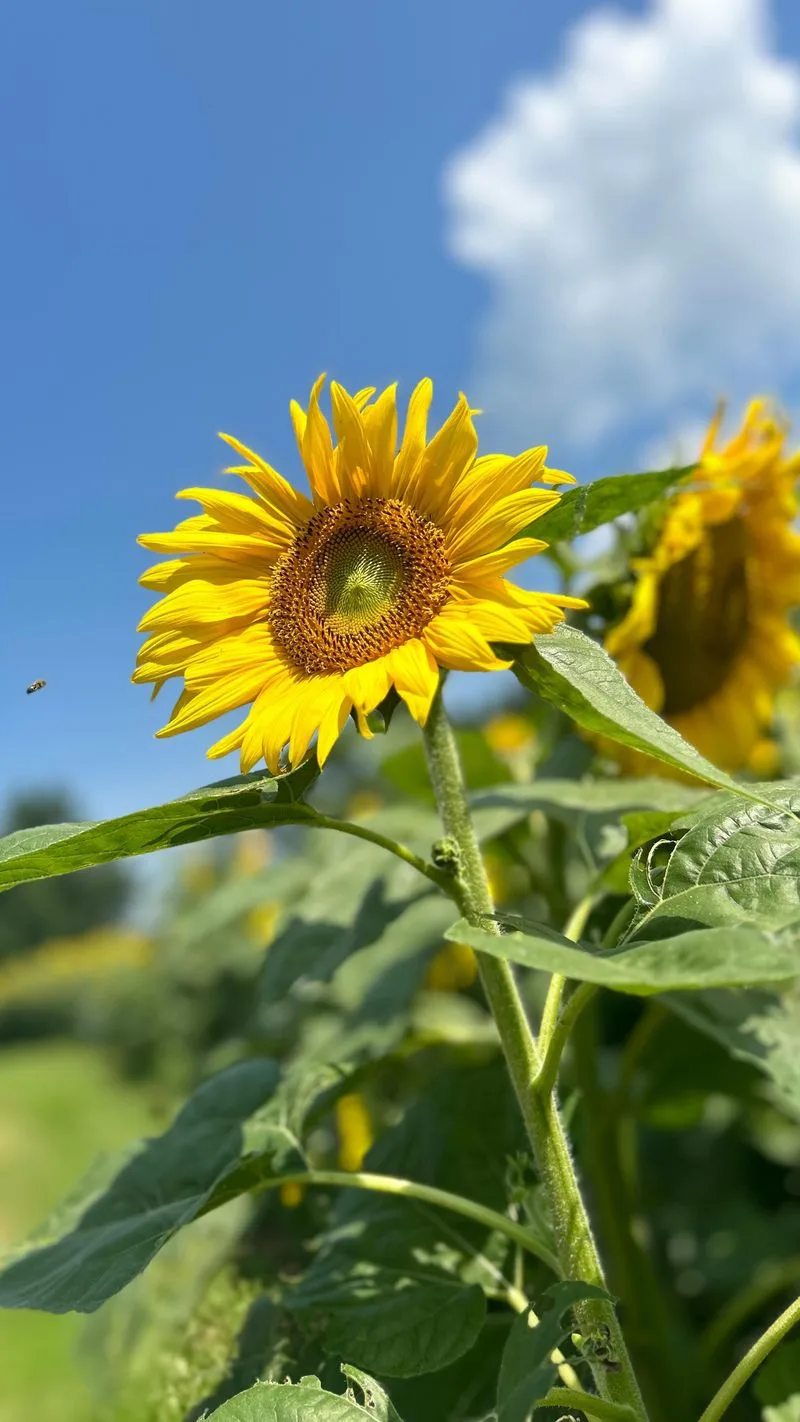
Sunflowers boast a rich history, dating back to 1,000 B.C. when they were cultivated by Native Americans. Used for food, dye, and medicine, sunflowers were integral to their culture. These early uses highlight the plant’s versatility and significance in ancient communities. Imagine standing in a field centuries ago, witnessing sunflowers’ importance firsthand. Their legacy continues today, as they remain a staple in culture and agriculture. Reflecting on their past enriches our appreciation for these timeless blooms, connecting us to history’s tapestry.
Sunflowers in Folklore
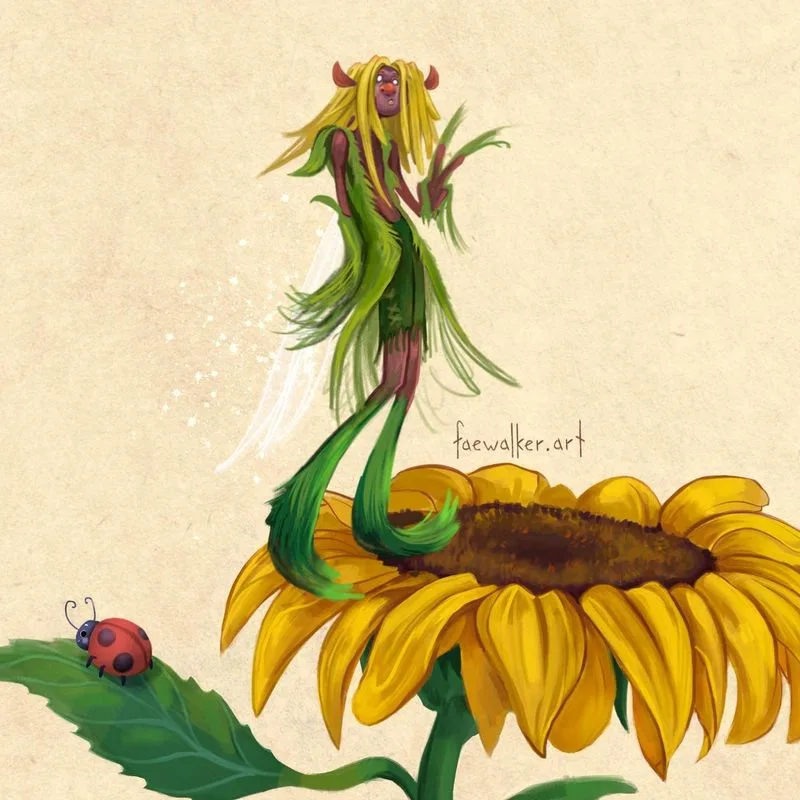
Various cultures weave sunflowers into their folklore, attributing magical properties to these bright blooms. In some tales, sunflowers are believed to bring good luck or ward off evil. Their cheerful appearance and sun-linked nature lend themselves to stories of transformation and joy. Imagine a village elder sharing tales of sunflowers’ protective powers during a gathering. These stories add a layer of mystique to the flowers, enriching their narrative world. Listening to folklore about sunflowers offers a glimpse into cultural values and creative storytelling.
Sunflowers and Wildlife
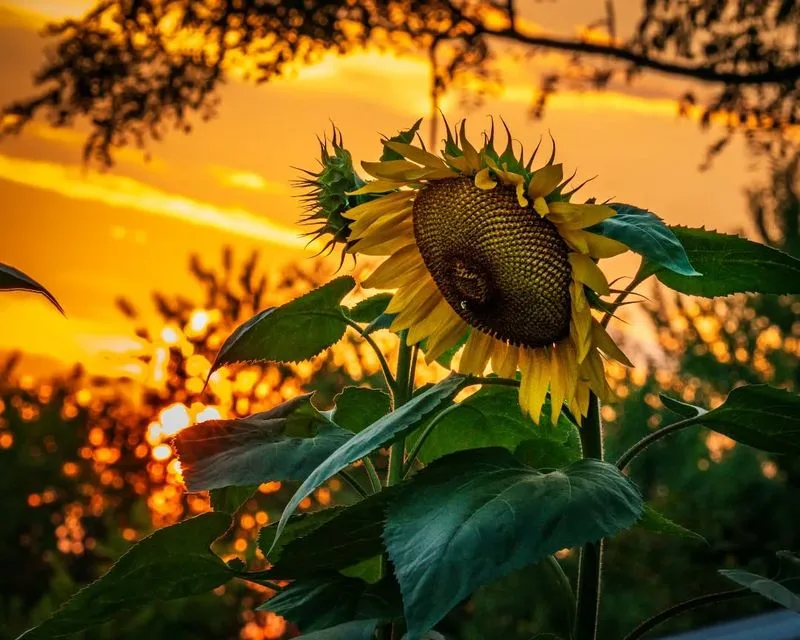
Sunflowers are not only loved by humans but also by wildlife. Birds, especially, enjoy feasting on sunflower seeds, making them a favorite among birdwatchers. This natural feast supports local ecosystems, providing essential nutrition to various species. Imagine watching a flock of birds descending upon a sunflower field, their chatter filling the air. The seeds’ high-fat content aids in energy replenishment, crucial for migration and survival. This interaction illustrates nature’s cycle, where sunflowers play a vital role in sustaining life around them.
Sunflowers and Human Health

Sunflowers not only brighten landscapes but also uplift spirits. Their association with the sun and positivity translates into mental health benefits. Spending time around sunflowers can boost mood and reduce stress, contributing to overall well-being. Imagine strolling through a sunflower field, feeling the warmth and joy they radiate. This connection with nature fosters mindfulness and relaxation. Sunflowers remind us of the simple pleasures in life, encouraging a break from daily pressures. Next time you need a mood lift, seek out a sunflower’s sunny embrace.

